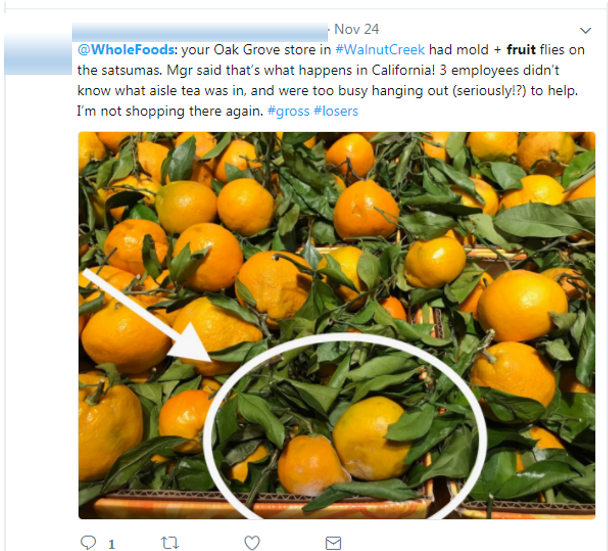I took plenty of heat back in June when I said the $13.7 billion Amazon-Whole Foods merger “would be a surprising setback for the internet giant.”
Looks like I was right.
The first cracks in the supposed synergies of these two very different companies are already starting to show.
Shoppers noticed the deteriorating quality of the fruit first. You can find plenty of posts like this one on social media:

(Via Twitter)
Of course, if you look hard enough, you can always find disgruntled people to complain loud and long about one thing or another. Maybe it’s just a one-off sort of thing?
But you can find signs elsewhere.
The Amazon-Whole Foods Merger & “Conventionalization”
For instance, according to RetailDive.com, Whole Foods CEO John Mackey noted in a speech to industry insiders that the Amazon-Whole Foods merger has been challenging, while optimistically believing “I do think Amazon and Whole Foods are going to do major stuff together.”
Fair enough. But reading between the organic tea leaves, analysts at Barclays believe “Mackey’s comments could be an indication that integration is occurring at a slower-than-expected pace, or that his tenure at the combined entity could be short-lived.”
I’ll go a step further. It means both. I predicted these problems when the deal was announced in June:
Amazon is the company where data and ‘purposeful Darwinism’ reign. … By design, it’s a tough, unforgiving corporate environment. … Then there’s Whole Foods, where the company’s success has always focused on squishy, very un-Amazonian ideals — such as employee happiness and workplace satisfaction for its 91,000 employees.
Barclays recently sent a team of analysts into Whole Foods stores to make their own conclusions. They came up with this disturbing (for Amazon shareholders) trend: “the ‘conventionalization’ of Whole Foods is underway.”













Leave A Comment